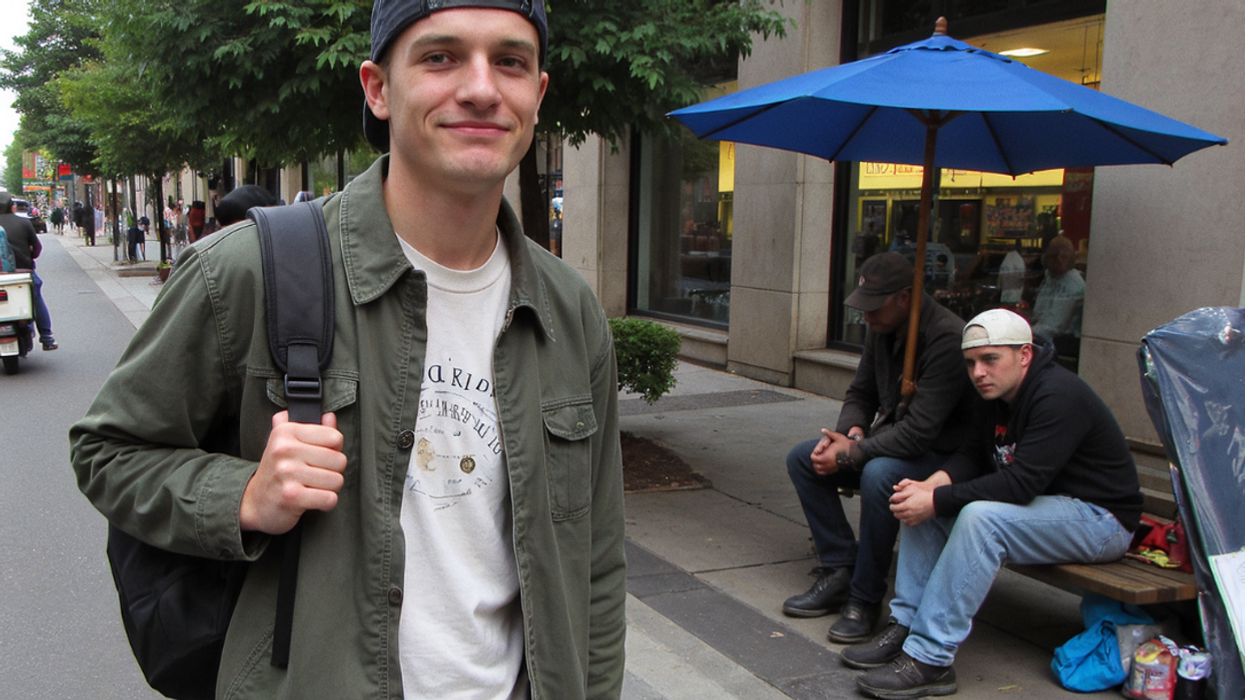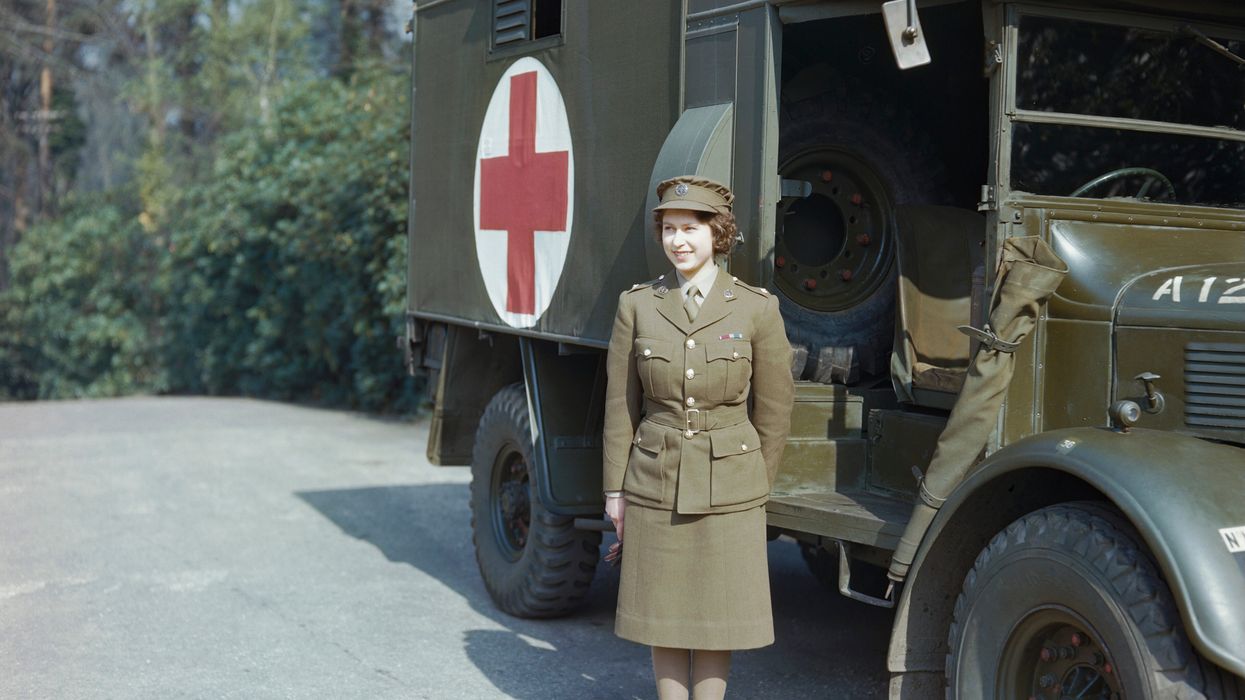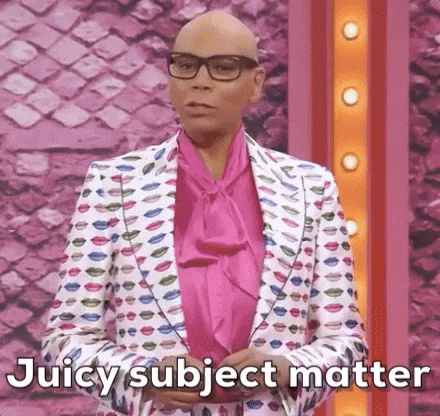Los Angeles County Sheriff's deputy Art Gonzalez is currently living in fear because he took the bold stance to stand up to an alleged violent clique of cops. For six hours, he testified under oath about a gang of deputies at the Compton station known as the Executioners.
In his testimony for an excessive-force lawsuit, he alleged that deputy Miguel Vega killed 18-year-old Andres Guardado, to impress the Executioners gang in hopes of being initiated.
Gonzalez's claim states he has been forced to step down from his position as a field training officer due to the fear of retaliation from fellow officers.
Gonzalez is a former U.S. Marine decorated for his service in Iraq and Afghanistan. His tipping point came after an Executioner assaulted fellow deputy Thomas Banuelos. After the incident, he left an anonymous tip on a confidential hotline that was intercepted and sent to the Executioners.
After reporting the attack, a note that read "Art is a rat" was placed on the keypad to the entrance of the patrol station.
According to Gonzalez, there are 20 members and 20 prospective members of the Executioners at the Compton station, located a few miles south of Los Angeles.
The Executioners are identified by a tattoo of a skeleton wearing a Nazi-style helmet, wielding an AK-47. Gonzalez claims the gang celebrates deputy shootings with "inking parties" where new members are initiated into the group.
"Often the inking is attached to some act of violence, including a shooting. It's the ultimate expression of your commitment to policing and your commitment to the gang," Professor Sean Kennedy of Loyola Law School told ABC 7 News.
"We have a gang here that has grown to the point where it dominates every aspect of life at the Compton station," Alan Romero, an attorney representing Gonzalez in the claim, said according to Business Insider.
"It essentially controls scheduling, the distribution of informant tips, and assignments to deputies in the station with preference shown to members of the gang as well as prospects," he continued.
According to Gonzalez's testimony, Black and female deputies are not allowed in the gang.
Deputy Banuelos says that he has been bullied and intimidated for five years by the Executioners. It was his assault by deputies that moved Gonzalez to leave his anonymous tip.
Banuelos was told to meet with the enforcer of the gang where he was severely beaten and then told "not to cooperate with investigators and to lie about the violent attack."
"It was a very serious, violent and bloody assault which could have killed Deputy Banuelos," Romero said. "He had him on the ground and was literally just bashing his head in with his elbow over and over and over again."
The enforcer told Banuelos, "if you open your mouth, you'll be labeled as no good, which essentially means that you're open for retaliation in the station by all members of the gang," Romero said.
The most startling allegation made in Gonzalez's testimony is that the Guardado murder was done as part of an initiation.
Guardado was working as an unlicensed security guard for an auto body shop in Gardena, California, near West Compton, when he was approached by officers. The teenager ran and was shot in the back five times by officer Miguel Vega.
Andrew Heney, a witness at the scene, says that Guardado "got down on his knees and surrendered with his hands behind his head but was still shot seven times in the back."
Vega's attorney claims that when the deputy approached Guardado, who was laying on his stomach in the alley, he quickly grabbed for a gun and the officer opened fire on him.
Heney claims that several cameras at the scene, including a digital video recorder that stored surveillance footage, were taken and destroyed by police after the incident.
The incident is still being investigated, but Guardado's family has filed a lawsuit against the Sheriff's Department and the officers involved.

















 Wiman hiding her face behind a bunch of cashCanva
Wiman hiding her face behind a bunch of cashCanva A mansion and its reflection in the swimming poolCanva
A mansion and its reflection in the swimming poolCanva Salzburg at nightCanva
Salzburg at nightCanva Fancy homeCanva
Fancy homeCanva Happy volunteersCanva
Happy volunteersCanva
 Parents of young children get more time with them if they work from home.Photo credit: Canva
Parents of young children get more time with them if they work from home.Photo credit: Canva



 Juicy subject matter
Juicy subject matter Giphy from The Blacklist.
Giphy from The Blacklist. We could start a rumor.
We could start a rumor.
Grieving couple comforting each other
This response to someone grieving a friend might be the best internet comment ever
When someone is hit with the sudden loss of a friend or loved one, words rarely feel like enough. Yet, more than a decade ago, a wise Redditor named GSnow shared thoughts so profound they still bring comfort to grieving hearts today.
Originally posted around 2011, the now-famous reply was rediscovered when Upvoted, an official Reddit publication, featured it again to remind everyone of its enduring truth. It began as a simple plea for help: “My friend just died. I don't know what to do.”
What followed was a piece of writing that many consider one of the internet’s best comments of all time. It remains shared across social media, grief forums, and personal messages to this day because its honesty and metaphor speak to the raw reality of loss and the slow, irregular path toward healing.
Below is GSnow’s full reply, unchanged, in all its gentle, wave-crashing beauty:
Why this advice still matters
Mental health professionals and grief counselors often describe bereavement in stages or phases, but GSnow’s “wave theory” gives an image more relatable for many. Rather than a linear process, grief surges and retreats—sometimes triggered by a song, a place, or a simple morning cup of coffee.
In recent years, this metaphor has found renewed relevance. Communities on Reddit, TikTok, and grief support groups frequently reshare it to help explain the unpredictable nature of mourning.
Many readers say this analogy helps them feel less alone, giving them permission to ride each wave of grief rather than fight it.
Finding comfort in shared wisdom
Since this comment first surfaced, countless people have posted their own stories underneath it, thanking GSnow and passing the words to others facing fresh heartbreak. It’s proof that sometimes, the internet can feel like a global support group—strangers linked by shared loss and hope.
For those searching for more support today, organizations like The Dougy Center, GriefShare, and local bereavement groups offer compassionate resources. If you or someone you know is struggling with intense grief, please reach out to mental health professionals who can help navigate these deep waters.
When grief comes crashing like the ocean, remember these words—and hang on. There is life between the waves.
This article originally appeared four years ago.